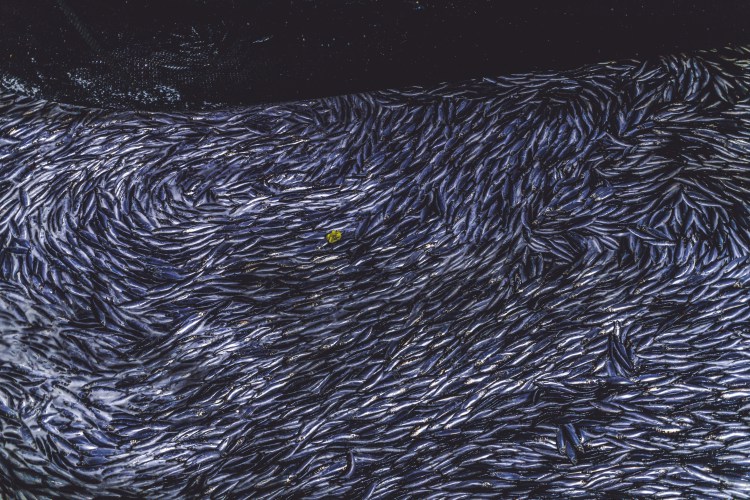Is Closure of BC Central Coast Roe Fishery a Red Herring? #SayNotoROE
Published by Sea Shepherd Conservation Society
MARCH 4th 2018
COMMENTARY BY CAPTAIN LOCKY MACLEAN
SEA SHEPHERD MARINE OPERATIONS AND CAMPAIGNS DIRECTOR
Hornby Island, Strait of Georgia, BC, CANADA locky@seashepherd.org
The herring stocks of West Coast Vancouver Island, Haida Gwaii, and Prince Rupert have already collapsed. The Federal Government’s recent closure of the Central Coast area, an already wiped out herring fishery, only takes attention away from the slaughter taking place right now in the Strait of Georgia.

As the Strait churns a milky turquoise from the millions of spawning herring, attracting threatened Orcas, sea lions, and birds in vast numbers, the DFO (Fisheries and Oceans Canada) is permitting a fishery during the height of this ecologically critical event. They are squandering the chance to protect the last relatively healthy Pacific herring spawn in Western Canada, when these fish are the main food source for threatened Chinook salmon, which in turn are the primary food source of the 76 remaining resident Orcas.

If the herring roe fishery in the Strait of Georgia is allowed to proceed, the salmon and Orcas will be further threatened and the demise of the coast’s marine ecosystem will include a long list of species who depend on the herring, such as cod, bald eagles, humpback whales, bears, wolves, seals and sea lions.
The implications to the 15.7 billion dollar B.C. tourism sector would not go unnoticed.
The herring eggs or “roe” constitute 10% of the fish and are exported mainly to Japan for a pittance ($700 a ton down from over $5000 a ton in the 1970’s). Once the roe is removed, the remaining 90% of the fish is ground into feed for farmed salmon and pets.
It is time to expose the herring roe fishery for what it is: a reduction fishery (turning the catch into fishmeal and fish oil), which is Illegal without “Ministerial Permission” and should be banned by DFO immediately.
While Washington State to the south is phasing out open net pen fish farming, Canada maintains the herring roe fishery for the benefit of the farmed salmon industry. The by-product of roe for the Asian market, cannot justify the risk to the iconic wild Orcas and wild salmon that are cherished and revered along the West Coast of Canada.

The DFO continues to fail dismally in its management of our ocean ecosystems, and is incapable of taking decisive action to create marine protected areas (there is a big difference between creating an MPA and temporarily closing a Fishery) and prevent yet another fishery from collapsing and species from becoming extinct.

Some residents at the epicenter of the Strait of Georgia herring spawn have caught on to the importance of this issue. Hornby Island’s HerringFest (March 7-10) aims to educate Strait of Georgia communities about the importance of herring and involve them in fighting for the protection of this valuable species. conservancyhornbyisland.org
Sea Shepherd’s research vessel, the R/V Martin Sheen, will return in June for Operation Virus Hunter III, a salmon defense campaign off the coast of British Columbia, assisting Scientist Alexandra Morton in her investigation on the impact that salmon farms have on wild salmon and herring populations in the Province.
Seashepherd.org/category/virus-hunter
Read the full article at: https://seashepherd.org/2018/03/05/protected-is-closure-of-bc-central-coast-herring-roe-fishery-a-red-herring-saynotoroe/




